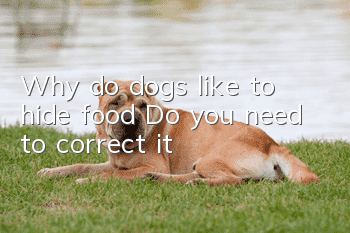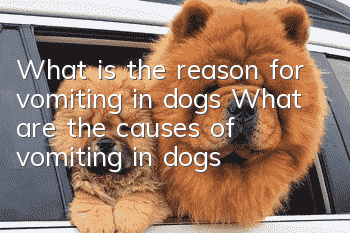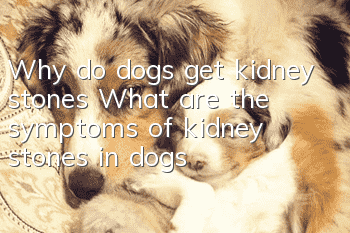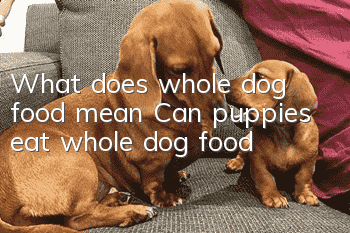Why do dogs like to hide food? Do you need to correct it?

Dogs’ preference for hiding food is a remnant of evolution
1. Dogs’ habit of burying food is buried in their genes;
2. The behavior of dogs hiding food is often caused by the dog’s bad feeding habits.
Many people who raise dogs will find that dogs like to hoard food in various places at home. Such as sofa cushions, beds, wardrobe corners, bedside tables, etc. Even sometimes when we lie in bed and sleep, we will find a pile of dog biscuits under the pillow. Usually after they bury the food, they will not take it out to eat again (because the food is abundant and the tubes are full).
To find out the reason, we have to start with the dog's close relative - the wolf. To be more precise, it is the hunting method of the wolf.
For small animals, wolves can eat them immediately after being captured and basically leave no food behind. But for large prey, such as cattle, horses, sheep, etc., there will still be considerable leftover food. If the wolf pack is small, like a few wolves, then they will tear off large pieces of meat and bury it in the soil to "hide" it. The purpose is to prevent scavengers such as crows and vultures from getting access to the food, which is also convenient. There will be no food or time to eat in the future. Generally speaking, the burial place will be near the hunting point, and sometimes the wolves will take it back to the den and hide it. When burying food, they usually dig a large enough hole with their front feet, then place the bits of meat in their mouths into the hole, and then use their snouts to push the soil back to its original place.
Burying is not the purpose, eating it later is the final result. Usually on the second day, the wolf will return to the burying point to dig out the meat with its front feet, open its mouth to bite it, shake the sediment hard, and then feast. Dogs have the habit of hoarding food, which is a remnant of evolved behavior. In the wild, food sources are unstable so excess food needs to be stored. However, domestic dogs basically do not have "unstable food sources" and may even be overfed and overstuffed.
Why do dogs hide food when they have enough food
Dog psychology is different from human psychology. Dogs are animals that live in the moment. He won’t remember that you poured him a bowl of dog food yesterday, and he won’t plan to pour him a bowl of dog food tomorrow. It will only see a large bowl of endless food in front of it, and at this time the genes buried in the body will take effect. "If you hide the uneaten food, you won't have to starve in the future." As a result, after you continue to feed him a large bowl the next day, he will continue to eat more and hide some, and the cycle repeats. But it never needs to take out the hidden food to eat again, because there is absolutely no need.
What kind of food do dogs like to hide?
Slightly larger snacks such as dog biscuits. If you give them to them because they are too full, hide them. The chances of getting up will increase. The most popular collectible in the dog world is "bones", whether it’s a big leftover bone for him to chew on or an edible bone specially bought for him to grind his teeth. Because the bones themselves have the basic characteristic of being "not immediately edible", this food feature will more easily arouse the dog's desire to bury leftover food. There is also a special situation where the dog will try to hide the entire bowl of food in the corner of the room. They will "cover" the food bowl with their noses. What you see is that they are walking on the floor with their noses holding the food bowls. They know that endless leftovers are delicious, but they are not hungry at the time, so they want to hide them in the corner of the room.
Dogs hide foodHow to correct it
The best way to overcome food hoarding is to establish reasonable and scientific eating rules< for pets /b>
1. Take the dog for a long walk before feeding, so that it "works" for the food (for example, if you take the dog for a walk before going to work every day and after work, it will also consume the pet's physical strength and exercise by the way);
2. When he comes home and prepares food, let him sit down and wait for a while (don't worry about feeding, if the dog can sit quietly and wait obediently), then pour the food into the bowl.
3. When it stops eating (of course being disturbed during eating does not count), or goes somewhere else, the pet’s eating time can end directly and the bowl should be taken away. , no longer feed it.
The purpose of these three methods is to let the dog "always have just enough food"; This makes it realize that "it can only eat once at a time. When it does not eat, The food will be gone”; it will also leave the dog with no extra food to store. Let your dog control his stomach while you control the appearance and disappearance of food. As long as such training is repeated, the dog's "bad habit" of burying food will be corrected.
- What to do if a puppy has diarrhea? What causes diarrhea in a puppy?
- How many types of shepherd dogs are there? A huge family tree of shepherds with high IQs.
- Why small dogs live longer than large dogs What causes longer lifespan
- How to judge whether a VIP is pure or not? Look at this!
- How to treat dogs suffering from canine distemper Home treatment methods for canine distemper
- What’s wrong with dogs having postpartum convulsions? Don’t take postpartum convulsions lightly.
- What does it look like if Schnauzer has a skin disease? If you want to get better quickly, don’t blindly treat it on your own
- Dog's head was beaten and bleeding. First aid treatment for dog's head trauma.
- Fungal dermatitis in dogs, improper care and treatment are useless
- Dogs bleed when brushing their teeth. Pay attention to your dog’s bleeding teeth.



